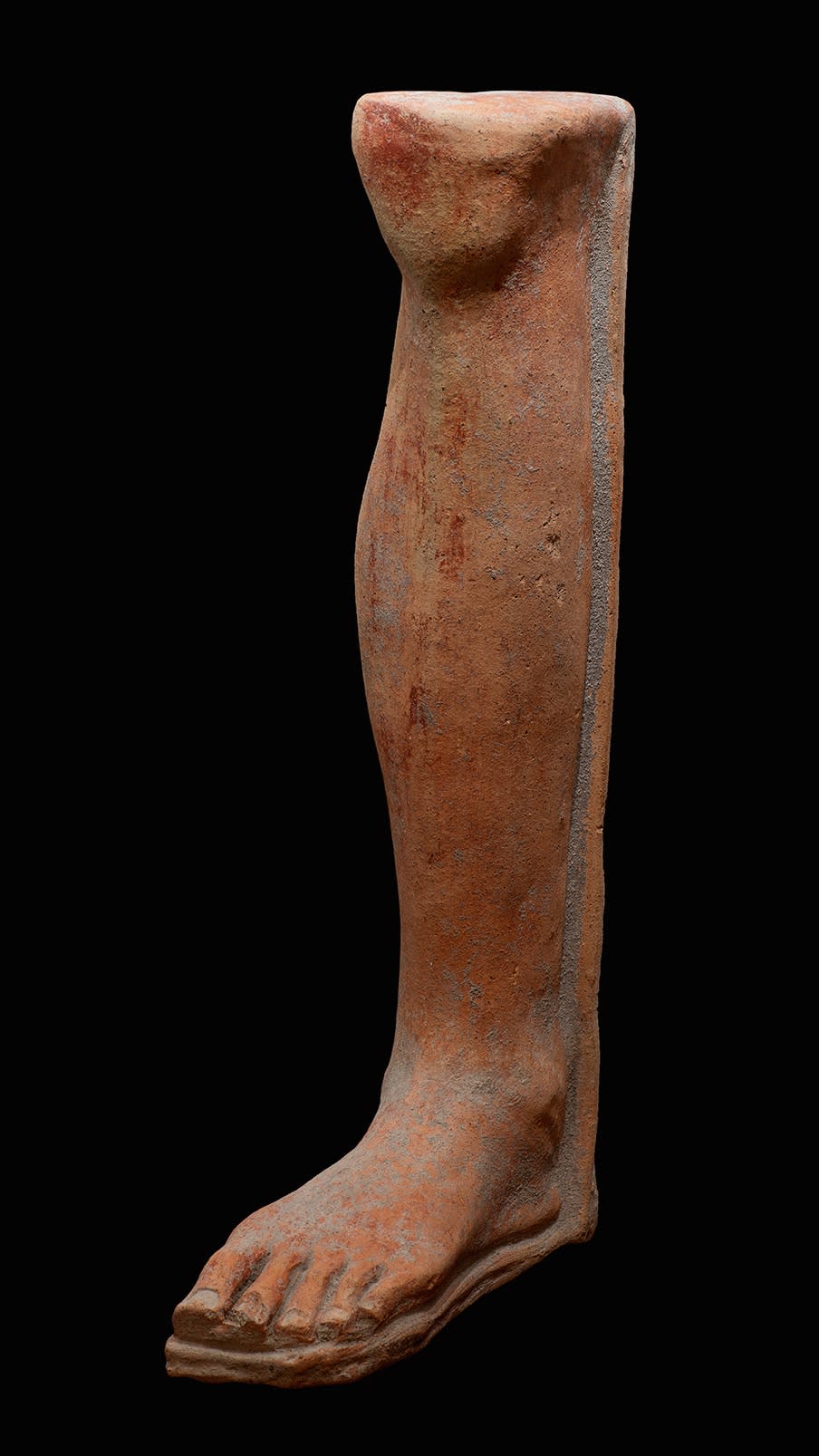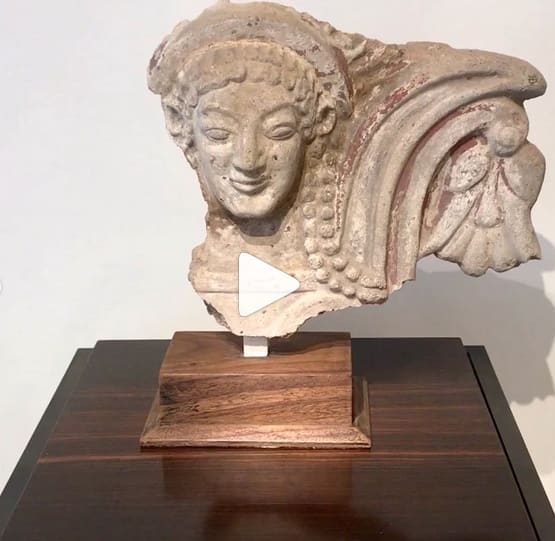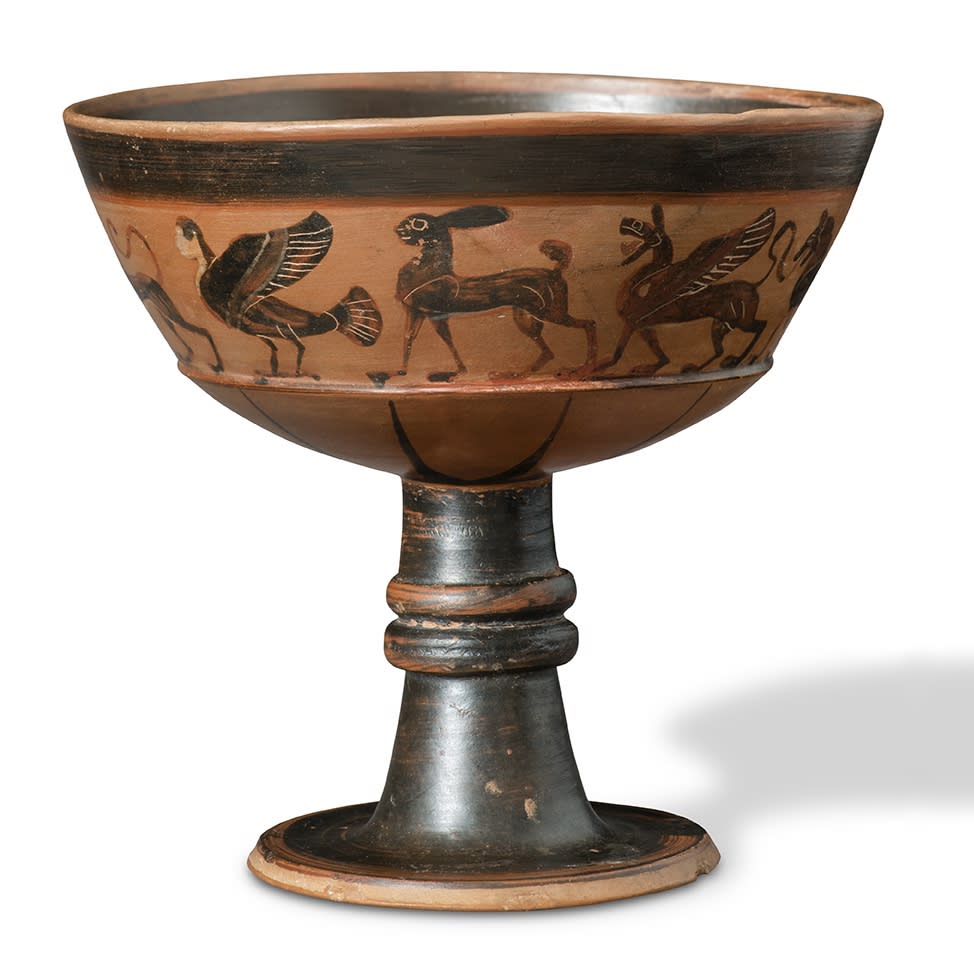ANCIENT ETRUSCAN ART

The Etruscans flourished in Italy in the 1st millennium BC, beginning with the Iron Age Villanovan people and ending with the absorption of the last remaining Etruscan cities into the Roman Empire in 27 BC.
Their territories encompassed what is now the region to the north of Rome, between the Arno and Tiber Rivers, and to the west of the Apennine Mountains. The Etruscan culture was well-developed and the art and art archaeology they left behind is distinctive.
The great Roman historian Livy said of the Etruscans that they were ‘the people most dedicated to matters of religion’ (Livy 5.1.6). Indeed much of the archaeology and material culture they left behind accords with this view as many Etruscan works of art had worship and ritual at the heart of their purpose.

AN ETRUSCAN BRONZE FIGURE OF HERCLE
Circa 4th century BC
For example, the bronze figure of Hercle would have been a votive piece. The Etruscans were expert bronzesmiths and bronze figurines were a common form of votive offering at sanctuaries and other sacred sites. Often they depicted the offerant, but deities were also frequently depicted such as the Hercle above.
The Hercle also demonstrates Hellenic influence on Etruscan art. The adaptation of Greek iconography to Etruscan art is complex, but often local gods are depicted in a visual and artistic form adopted from Greece.

AN ETRUSCAN TERRACOTTA VOTIVE LEFT LEG
Circa 4th - 3rd century BC
Another Kallos piece which can shed light on Etruscan religious and votive practices is the terracotta votive left leg. Rather than depicting the deity or the votary, the offering is an anatomical rendering of an afflicted body part dedicated in hope of a cure. This is a large and detailed example which still retains a great deal of its original colour.
The Etruscans were well known for their terracotta freestanding sculpture and architectural reliefs which were painted in bright colours. Stone wasn’t readily available in all parts of Archaic Etruria, so sculptures were largely executed in clay and the work produced at centres such as Caere (Cerveteri) was of exceptional quality.

Click on the image above to view a video of the piece on our instagram page
The Kallos antefix is just such an example of fine quality Etruscan terracotta sculpture. The details of the beaded hair and the smiling facial features are typical of work of the Archaic period and shows the effect of artists from Greece on Etruscan art - particularly the Eastern Greeks/Ionians, who emigrated in large numbers during the late 6th century BC.
Antefixes had three functions: placed on the eaves of the roof, they concealed the ends of the convex tiles and protected them from bad weather; they were also part of the architectural decoration; finally, they had an apotropaic role, banishing bad luck and bad influences from temples. Made in molds and painted, they usually took the form of a male or female face.

Image left: An Etruscan Terracotta Antefix of a female head, circa 510-500 BC
The J. Paul Getty Museum, Los Angeles
Image right: An Etruscan Terracotta Antefix of a female head, circa late 6th century BC
The Metropolitan Museum of Art, New York, inv.no. 1997.145.2a
It is the influence of these Ionian artists on Etruscan pottery which led to the production of ‘Pontic’ pottery, a distinctive type of early Etruscan black-figure pottery. The decoration usually consists of detailed and colourful multiple friezes which are related stylistically to Ionian pottery.

AN ETRUSCAN 'PONTIC' CHALICE, ATTRIBUTED TO THE TITYOS PAINTER
Circa 520-510 BC
This chalice was attributed by Dr. C.M. Stibbe to the Tityos Painter who was named after an amphora in Paris showing Tityos between Leto and Apollo, the latter pursuing him in a chariot drawn by winged horses. As with this example, many of his vases bear animal friezes and make copious use of added colour. Besides the Paris Painter, who exerted a strong influence on him, the Tityos Painter is considered the most important representative of the Pontic Group of vase painters.